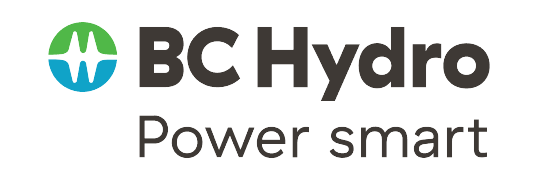Overview
All Go Electric rebates and programs are available to Indigenous Peoples in B.C. Go Electric also offers increased rebates and support for Indigenous businesses, organizations, communities and individuals.
Descriptive video transcript
Go Electric BC Rebates Program with rebate testimonial video transcript
[Describer] An electric shuttle bus charges at an urban office. A First Nation woman considers useful specialty-use electric vehicles.
[Narrator] Looking to upgrade to an electric delivery van, cargo e-bike, shuttle bus, utility boat, or other specialty-use vehicle?
[Describer] The CleanBC Go Electric logo appears underneath words that read:
[SUPER] Go Electric Rebates
[Narrator] CleanBC’s Go Electric Rebates can make investing in zero-emission vehicles more affordable.
[Describer] A photo of a smiling First Nation woman appears with text that describes her as:
[SUPER] Xoyaliya, Cheryl Charlie – Sts’ailes Council – Education Portfolio
[SUPER] Sts’ailes First Nation – Go Electric Rebate Recipient
[Cheryl] Éy swayel Xoyaliya tel skwix̱. Te litsel kwa Sts’ailes. Hello everyone, my name is Cheryl Charlie and I’m from Sts’ailes First Nation, and I would like to share that our community was fortunate to be a part of the Go Electric funding, and we use the rebate funding to purchase three electric buses for our Sts’ailes Community School.
[Describer] Examples of specialty-use electric vehicles appear.
[Narrator] Go Electric Rebates are available for a variety of specialty-use electric vehicles, including electric motorcycles, cargo e-bikes, utility vehicles such as electric golf carts, boats, or snowmobiles, airport or port vehicles, as well as medium and heavy-duty on-road vehicles such as electric delivery vans, school buses, and short-haul trucks.
[Describer] A short-haul truck charges at a warehouse. An Asian businessman smiles.
[Narrator] These rebates are available to businesses, non-profits,
[Describer] An electric boat glides along BC coastline. A First Nation woman smiles.
[Narrator] Indigenous organizations, and First Nations communities.
[Describer] An electric motorcycle drives by storefront shops. A Caucasian woman smiles.
[Narrator] Individuals can also access rebates for electric motorcycles
[Describer] A neighborhood zero-emission cargo vehicle charges at a First Nation government building. A First Nation man smiles.
[Narrator] and neighborhood zero-emission vehicles.
[Describer] A Canadian maple leaf appears side-by-side with the CleanBC Go Electric logo.
[Narrator] Funding from similar federal government programs can be combined to cover even more costs –
[Describer] An Asian businessman smiles beside a price tag that gets filled up three quarters full.
[Narrator] up to 75 percent for most applicants
[Describer] A First Nation woman smiles beside a price tag that fills to the top.
[Narrator] and up to 100 percent for local or Indigenous governments, while funding lasts.
[Describer] A photo of Cheryl Charlie of Sts’ailes First Nation appears again.
[Cheryl] When we first got the buses, the kids were just so excited that every class went out and did a tour on the buses. I think our council members even got to ride in the parking lot and test them out before they actually went out on a bus run. Everybody’s really excited, the entire community that we’re one of the first schools to bring in electric buses. So we wouldn’t have been able to purchase buses if we didn’t have access to the rebate program.
[Describer] An electric motorcycle charges at a parking lot in a bustling city.
[Narrator] Switching to zero-emission vehicles means saving money, cleaner air, better health,
[Describer] A short-haul truck charges at a peaceful highway rest stop.
[Narrator] and meaningful progress toward a low-carbon future.
[Describer] Money is distributed to a lineup of people.
[Narrator] Funding is available on a first-come, first-served basis while funding lasts.
[Describer] A laptop appears with the words:
[SUPER] Go-Electric-Other-Rebates-dot-C-A
[Narrator] Visit Go-Electric-Other-Rebates-dot-C-A to review the program details, browse eligible vehicles, and submit your application.
[SUPER] Delivered by PlugInBC.
[Describer] The CleanBC Go Electric logo appears with the url:
[SUPER] Go-Electric-B-C-dot-G-O-V-dot-B-C-dot-C-A
Increased rebates
EV charger rebates
B.C. Indigenous communities and businesses can get rebates of up to 75% of the costs to purchase and install charging equipment at their homes or workplaces. Visit your electricity service provider’s website for more information and to apply for a charger rebate.


EV charging advice
Thinking of applying for EV charger rebates for a multi-unit residential building or a workplace? Indigenous organizations can get up to 5 hours of free advice. EV charging advisors can guide you through the process of setting up EV charging stations at your building.

Support for public charger projects
Funding for up to 90% of project costs (to a maximum of $130,000) per station is available for Indigenous-owned Direct Current Fast Charger (DCFC) stations
Descriptive video transcript
Go Electric BC Public Charger Program with rebate testimonial video transcript
[Describer] An electric SUV parks at a small rural mall. A charging station appears. An Asian man watches and smiles.
[Narrator] Ready to invest in public EV charging infrastructure to help your community transition to electric cars, SUVs, and pickup trucks?
[Describer] The CleanBC Go Electric logo appears underneath words that read:
[SUPER] Public Charger Program
[Narrator] The CleanBC Go Electric Public Charger Program offers rebates to make these investments more affordable.
[Describer] A photo of a man appears with text that describes him as:
[SUPER] Ron Smith – Chief Executive Officer – Leq’á:mel Development Corporation
[SUPER] Leq’á:mel First Nation – Public Charger Program Recipient
[Ron] Hi, I’m Ron Smith. I am the CEO for the Leq’á:mel Development Corporation. We’re owned by Leq’á:mel First Nation. We applied for the CleanBC Public Charging Program, through CleanBC and Fraser Basin Council, and we installed two fast chargers here at the Canco fuel station and Tim Hortons in De Roche, which is located between Mission and Agassiz on Highway 7.
[Describer] A price tag is filled halfway. Icons appear for EV chargers and installation tools.
[Narrator] The public charger program covers up to 50 percent of costs for equipment and installation for two types of chargers:
[Describer] A public Level 3 charging station appears. A personal Level 2 charging station appears.
[Narrator] Level 3 Direct Current Fast chargers and Level 2 chargers.
[Describer] Electric vehicles charge outside an urban office. A Caucasian woman smiles.
[Narrator] So who can apply? Local governments, utilities, businesses, non-profits,
[Describer] An electric truck charges at a First Nation government building. A First Nation man smiles.
[Narrator] First Nations communities, and Indigenous organizations –
[Describer] A diverse group of British Columbians appear.
[Narrator] pretty much anyone committed to advancing clean energy in B.C.
[Describer] An electric SUV charges at a small rural mall. A calendar displays 10 years. An Asian man smiles.
[Narrator] Applicants must own the site or have written approval from the owner to use the site for a minimum of 10 years. Chargers must remain operational for at least 5 years.
[Describer] An electric car charges at a rural gas station. A First Nation man watches and smiles.
[Narrator] For Indigenous-owned charging stations, the program offers increased rebates –
[Describer] A price tag that fills almost completely to the top.
[Narrator] covering up to 90 percent of costs per station.
[Describer] A photo of Ron Smith of Leq’á:mel First Nation appears again.
[Ron] It’s been a fabulous project, really well-received by the community and by the traveling public on Highway 7. Electric vehicle chargers are a very important part of the infrastructure development for First Nations and non-First Nations communities. They are critical to the growth of the community and the region in general, particularly when there’s distances between larger urban centers and rural areas. It’s great for the economy, great for the environment, great for the communities and well received. Been a great asset to the development here at Leq’á:mel First Nation.
[Describer] Electric cars charge at a parking lot in a bustling city.
[Narrator] Switching to zero-emission vehicles means saving money, cleaner air, better health,
[Describer] An electric car charges at a peaceful highway rest stop.
[Narrator] and meaningful progress toward a low-carbon future.
[Describer] Money is stacked up around a calendar.
[Narrator] Rebates are available while funding lasts. With multiple funding rounds per year, there’s no better time to get started.
[Describer] A laptop appears with icons for EV equipment and installation tools. Words appear:
[SUPER]: Plug-In-B-C-dot-C-A-slash-Public-charger
[Narrator] Ready to bring public EV charging to your community? Visit Plug-In-B-C-dot-C-A-slash-Public-Charger to learn more and apply today.
[SUPER] Delivered by PlugInBC.
[Describer] The CleanBC Go Electric logo appears with the url:
[SUPER] Go-Electric-B-C-dot-G-O-V-dot-B-C-dot-C-A

Support for Indigenous-owned fleets
Indigenous communities and businesses are eligible for increased rebates for some Fleet Charging Program offers:
Desktop and Tablet Table
| Program offers | Percentage of rebate | Maximum rebate amount |
|---|---|---|
| For fleet assessments and business case development* | 75% of costs | $50,000 |
| EV infrastructure assessment* | 75% of costs | $5,000 |
| EV infrastructure work* | 75% of costs | $25,000 |
| Level 2 charging station purchase and installations | 75% of costs | $4,000 |
| Fast charging stations | 75% of costs | $65,000 |
| Fast charging stations for medium and heavy-duty ZEVs | 75% of costs | $115,000 |
Mobile Tables
Percentage of rebate
| Program offers | Amount |
|---|---|
| For fleet assessments and business case development* | 75% of costs |
| EV infrastructure assessment* | 75% of costs |
| EV infrastructure work* | 75% of costs |
| Level 2 charging station purchase and installations | 75% of costs |
| Fast charging stations | 75% of costs |
| Fast charging stations for medium and heavy-duty ZEVs | 75% of costs |
Maximum rebate
| Program offers | Amount |
|---|---|
| For fleet assessments and business case development* | $50,000 |
| EV infrastructure assessment* | $5,000 |
| EV infrastructure work* | $25,000 |
| Level 2 charging station purchase and installations | $4,000 |
| Fast charging stations | $65,000 |
| Fast charging stations for medium and heavy-duty ZEVs | $115,000 |
Descriptive video transcript
Go Electric BC Fleet Charging Program with rebate testimonial video transcript
[Describer] A fleet of electric cars, pickup trucks and vans charge in front of a First Nation government office.
[Narrator] Are you looking to electrify your fleet and invest in charging infrastructure?
[Describer] The CleanBC Go Electric logo appears underneath words that read:
[SUPER] Fleet Charging Program
[Narrator] The CleanBC Go Electric Fleet Charging Program offers rebates and advisory services to help make the transition to zero-emission fleets more affordable and accessible.
[Describer] A photo of a smiling First Nation woman appears with text that describes her as:
[SUPER] Xoyaliya, Cheryl Charlie – Sts’ailes Council – Education Portfolio
[SUPER] Sts’ailes First Nation – Fleet Charging Program Recipient
[Cheryl] Éy swayel Xoyaliya tel skwix̱. Te litsel kwa Sts’ailes. I’m Cheryl Charlie, and I’m from Sts’ailes First Nation, and I’m happy to report that we were approved, through the funding from the Go Electric Fleet Charging Rebate. And through that funding, we were able to install charging stations to support our new electric buses. So it’s a great way to bring electric vehicles into your community.
[Describer] Funding appears for icons of charging infrastructure and electric fleets.
[Narrator] The fleet charging program has four rebate offers to help electrify your fleet: charging stations, fleet assessments, infrastructure assessments, and electrical infrastructure upgrades.
[Describer] A South Asian woman appears by charging stations and a price tag, which fills halfway.
[Narrator] For Level 2 and Level 3 charging stations, rebates can cover up to 50 percent of purchase and installation costs,
[Describer] A First Nation man appears and the price tag fills three quarters full.
[Narrator] and Indigenous organizations are eligible to access rebates to cover up to 75 percent of costs.
[Describer] A clipboard with a FortisBC logo checks off all four programs: charging stations, fleet assessments, infrastructure assessments and electrical infrastructure upgrades.
[Narrator] Organizations that receive electricity from FortisBC are eligible for all four rebate offers through the Fleet Charging Program.
[Describer] A BC Hydro logo appears. Only the charging stations program is checked off.
[Narrator] BC Hydro electricity customers can obtain rebates for EV chargers through this program
[Describer] Checkmarks also appear beside fleet assessments, infrastructure assessments and electrical infrastructure upgrades. Words appear:
[SUPER] BC Hydro Fleet Electrification Program
[Narrator] and they can receive support for assessments and infrastructure upgrades through the BC Hydro Fleet Electrification Program.
[Describer] A fleet of short-haul trucks charge at a warehouse. A South Asian businesswoman smiles.
[Narrator] The Go Electric Fleet Charging Program is open to businesses, non-profits, local governments,
[Describer] A fleet of electric cars, pickup trucks and vans charge in front of a First Nation government office. A First Nation Man smiles.
[Narrator] First Nations communities, and Indigenous organizations.
[Describer] A map of British Columbia, a document and a fleet of school busses appear.
[Narrator] Applicants must be based in B.C., operate as a registered legal entity, and have registered fleet vehicles.
[Describer] A photo of Cheryl Charlie of Sts’ailes First Nation appears again.
[Cheryl] With that funding, we were able to expand our bus compound and install charging stations. So our buses can be charged overnight right next to the school, and it’s easy access for the drivers. And it’s been really handy for the drivers to have access to the buses so close to the school and in the community – it’s been very helpful.
[Describer] Electric cars charge at a parking lot in a bustling city.
[Narrator] Switching to zero-emission vehicles means saving money, cleaner air, better health,
[Describer] An electric car charges at a peaceful highway rest stop.
[Narrator] and meaningful progress toward a low-carbon future.
[Describer] Money is distributed to a lineup of people. A pricetag appears and is checked off.
[Narrator] Rebates are available on a first-come, first-served basis and are awarded after purchase.
[Describer] A Caucasian phone call taker appears with a clock that shows 40 hours.
[Narrator] To guide you through the process, Plug-In BC also offers up to 40 hours of free advice.
[Describer] A laptop appears with the url:
[SUPER] Plug-In-B-C-dot-C-A-slash-Go-dash-Electric-dash-Fleets
[Narrator] Ready to take your fleet electric? Visit Plug-In-B-C-dot-C-A-slash-Go-dash-Electric-dash-Fleets to learn more and begin your application today.
[SUPER] Delivered by PlugInBC.
[Describer] The CleanBC Go Electric logo appears with the url:
[SUPER] Go-Electric-B-C-dot-G-O-V-dot-B-C-dot-C-A

Supporting low-carbon and active transportation for B.C. First Nations
The First Nations Low-Carbon Transportation Project is working to improve transportation access in First Nation communities. The project is focused on transportation that is:
- Active
- Low-carbon
- Affordable
- Safe
- Reliable


